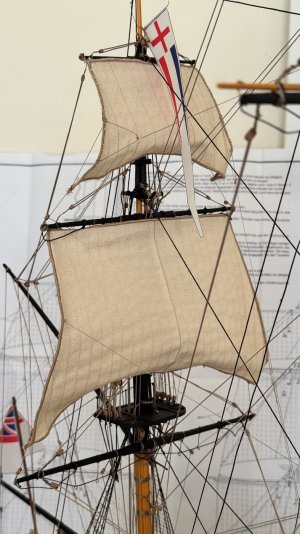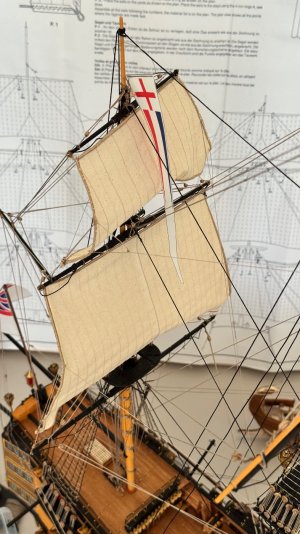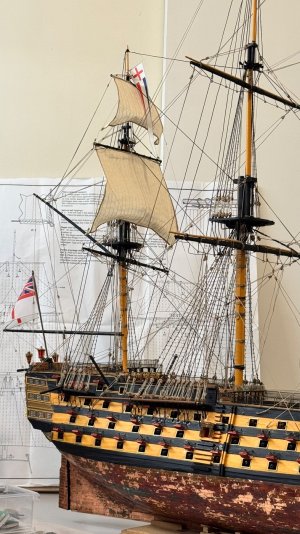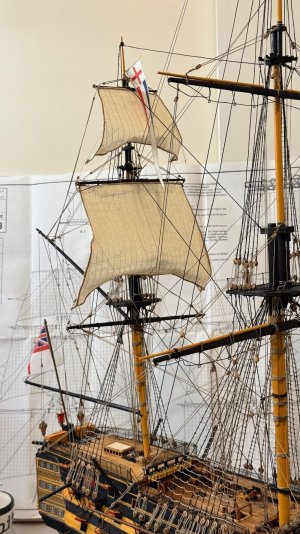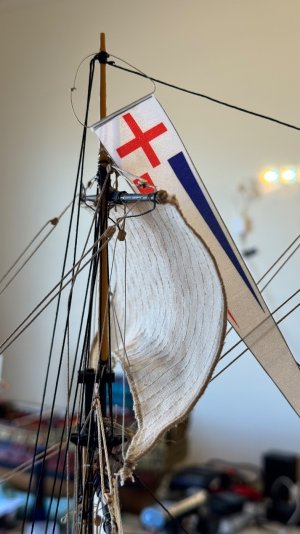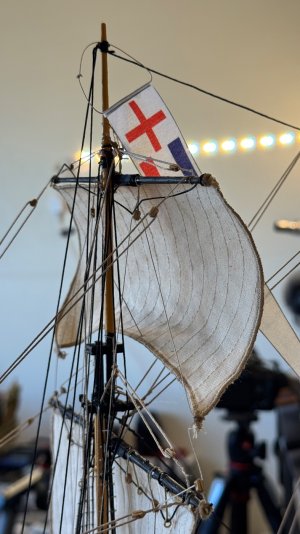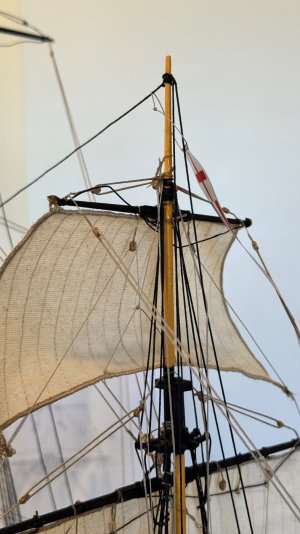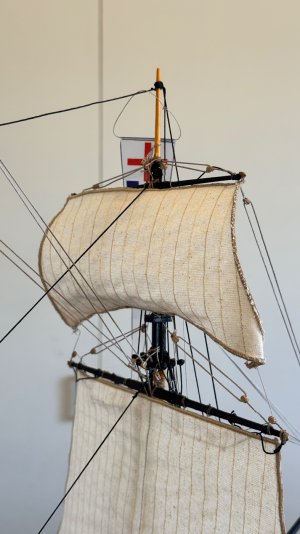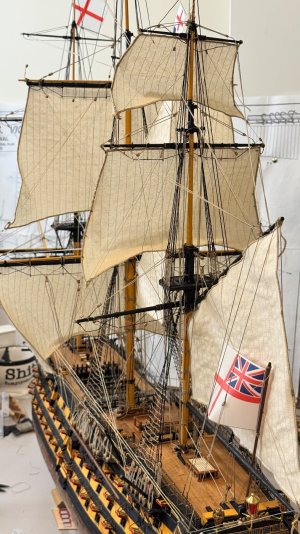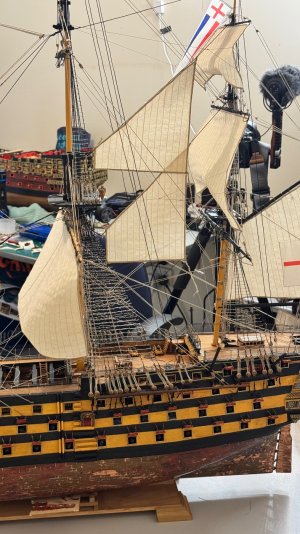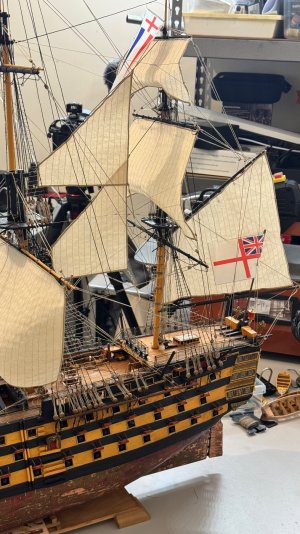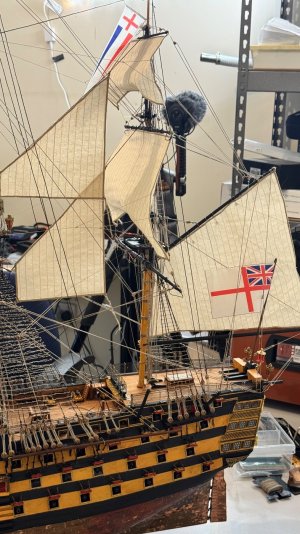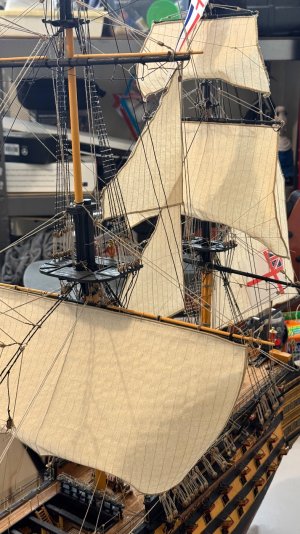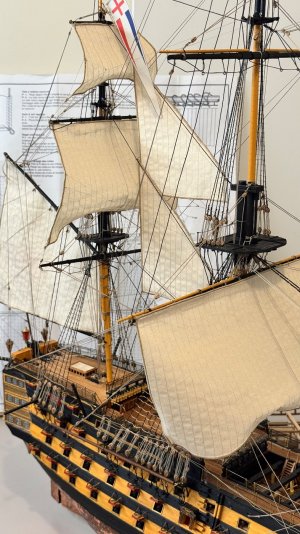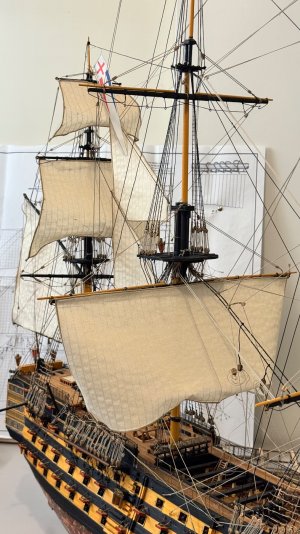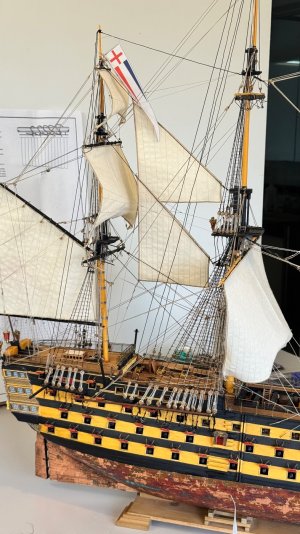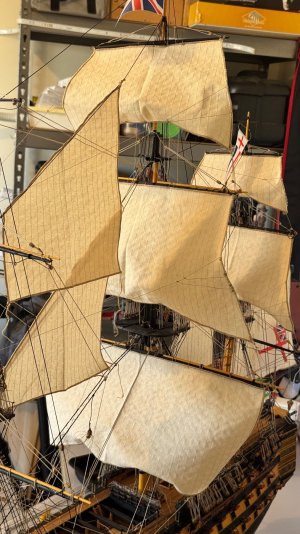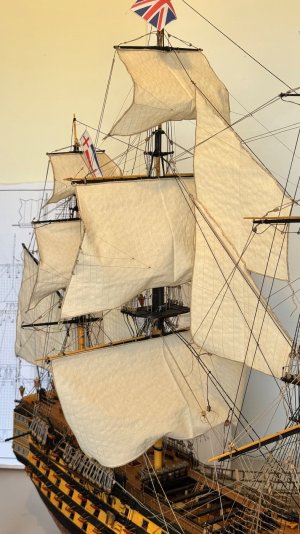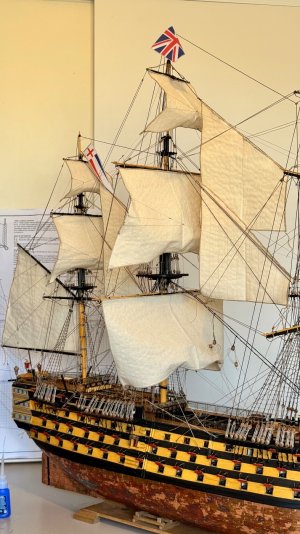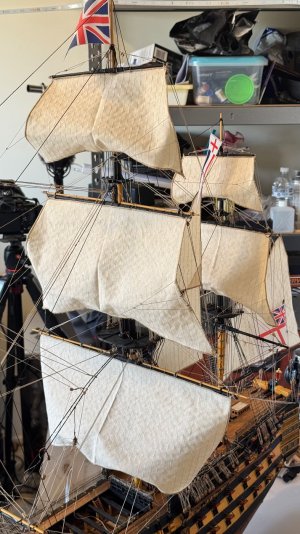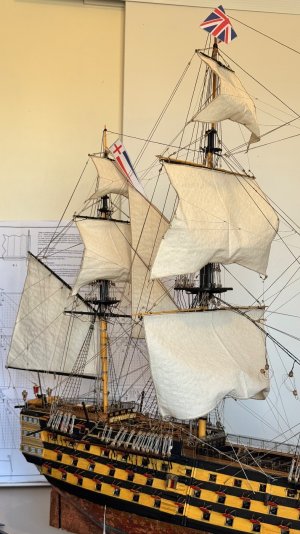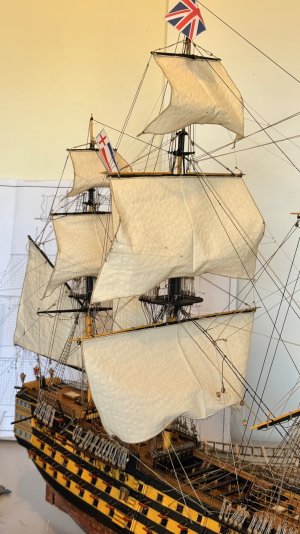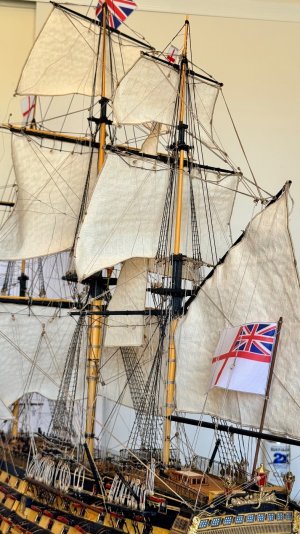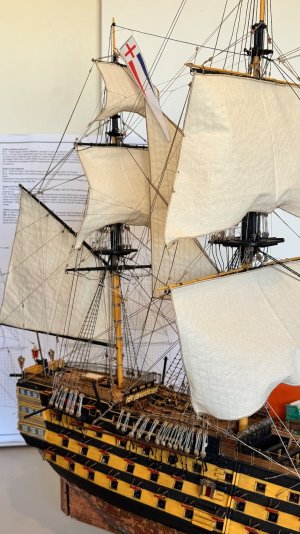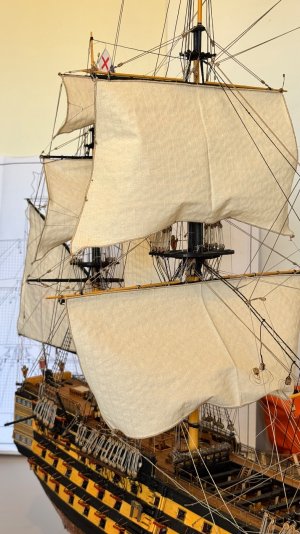
️ Sail by sail, she’s coming to life!

️
10 sails down – 6 or 7 to go!
Another huge milestone today on my Mantua HMS Victory build. After months of rigging, deadeyes, stays and lines, it’s an incredible feeling to now see the sails transforming her into a living, breathing ship. For the first time, I can actually feel the motion of this model—as if the wind is pushing her across the Channel.
I now have 10 sails mounted, carefully shaped to look naturally filled with wind rather than hanging flat. That’s always been a big goal of mine—realism over convenience. It would have been easy to just hang them straight, but I wanted the atmosphere of a ship under way, ready for action—as she would have looked at Trafalgar in 1805.
Every sail has its own challenge:

Correct tie points

Seam alignment

Curvature with realistic billow

Tensioning all the sheets and braces without distorting previous work

Making sure the lines don’t interfere with each other (easier said than done!)
I’m deliberately taking my time here. Each one of these canvas beasts has a personality of its own, and the more I add, the more intricate the web of rigging becomes. Still to go are the remaining staysails and topgallants, and then the real fine-tuning begins—adjusting belaying points, trimming excess line, tightening braces, coiling ropes on deck and bringing it all together as a proper Royal Navy warship.
I have to say—I’m absolutely loving how she looks right now. The sails introduce a powerful sense of movement and presence. Even standing still in the workshop, she looks ready to answer Nelson’s famous order:
“England expects that every man will do his duty.”
Next step tomorrow—more sails and more rigging lines! Steady as she goes.

️
Let me know what you think of the progress so far!
—Phil
View attachment 550162
View attachment 550163
View attachment 550164
View attachment 550165
View attachment 550166
View attachment 550167
View attachment 550168
View attachment 550169
View attachment 550170



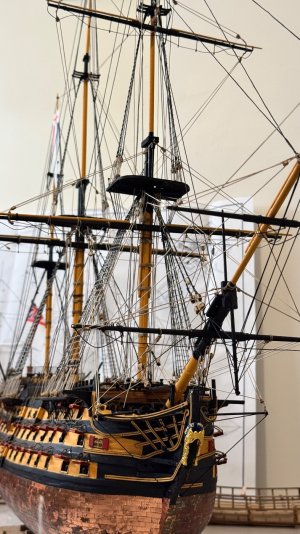
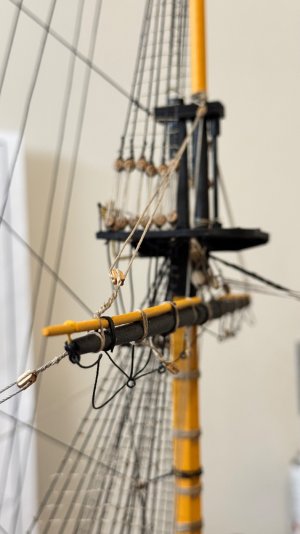
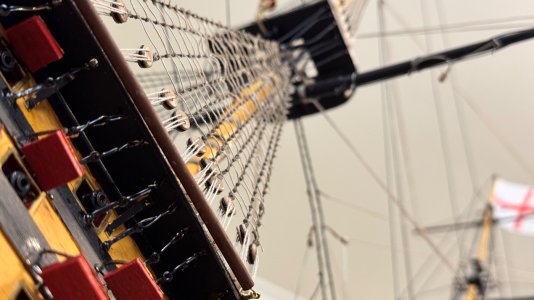
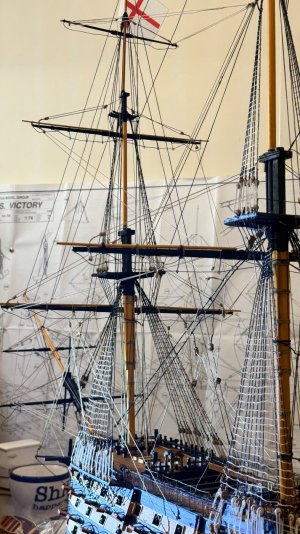
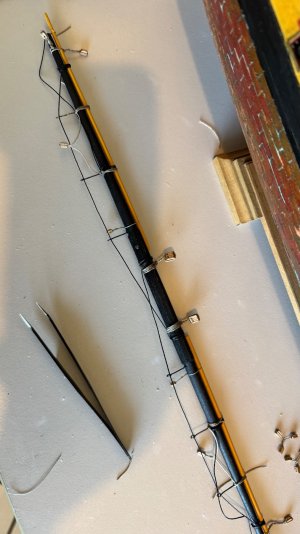
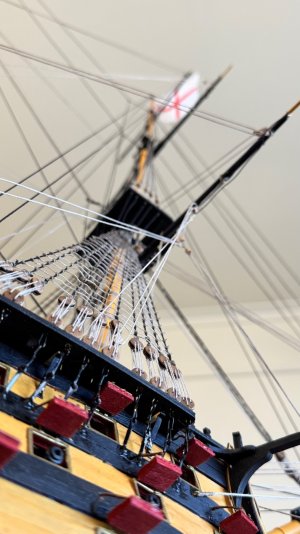
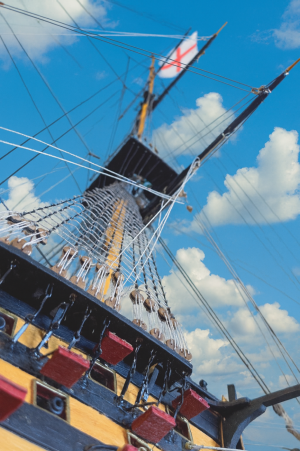
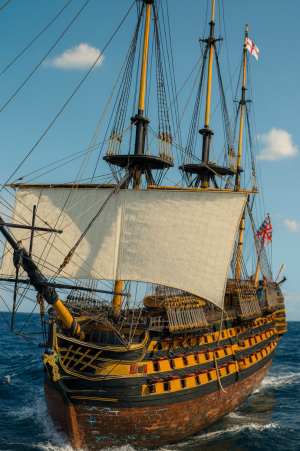
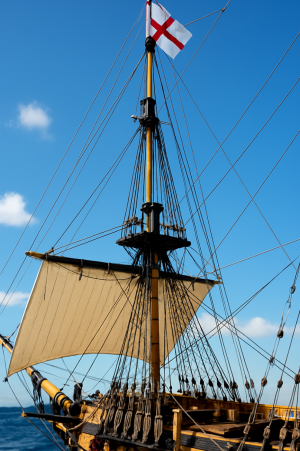

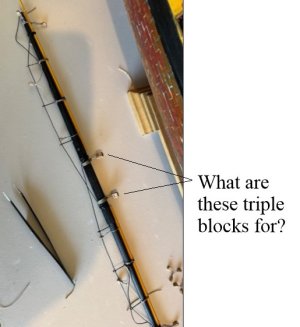

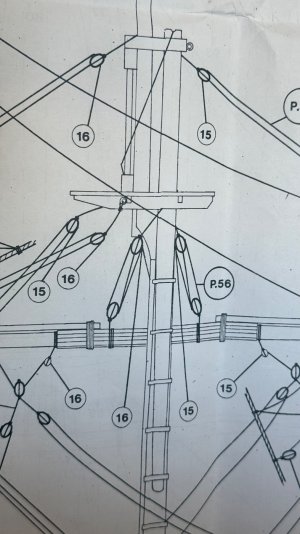
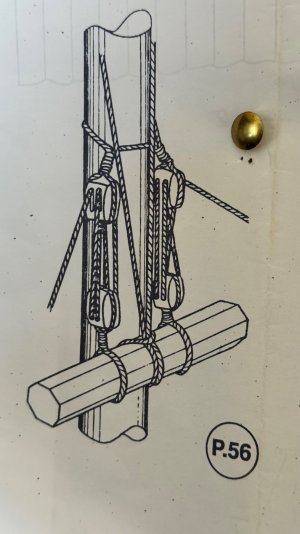
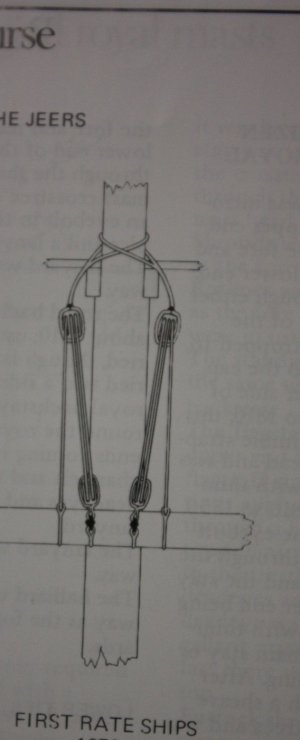
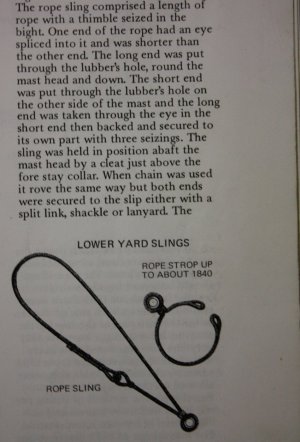
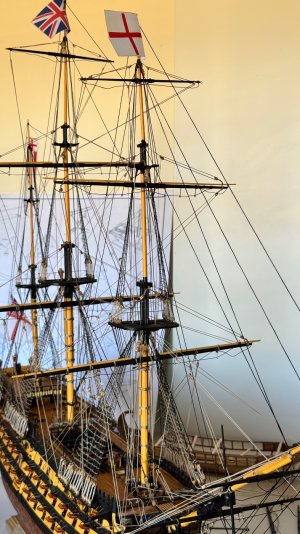
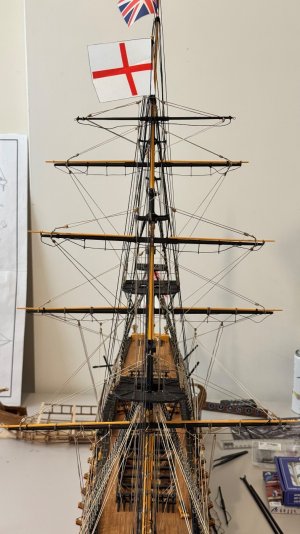
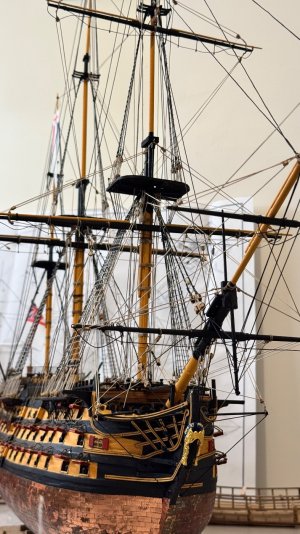
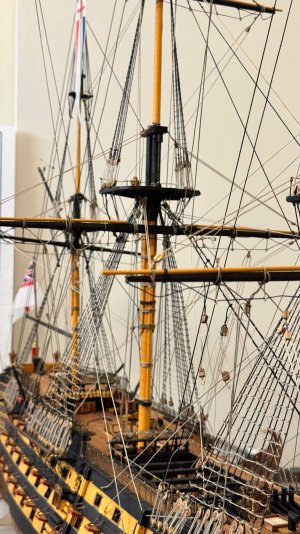
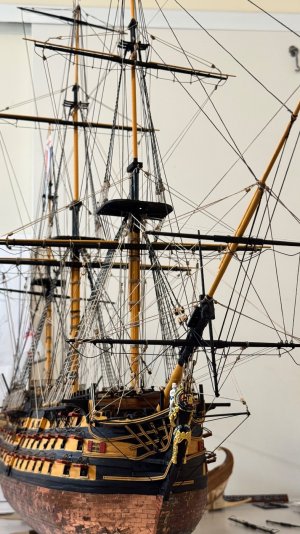
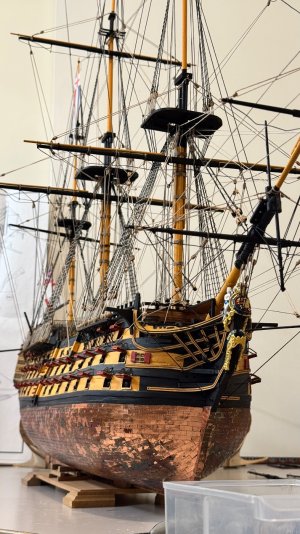
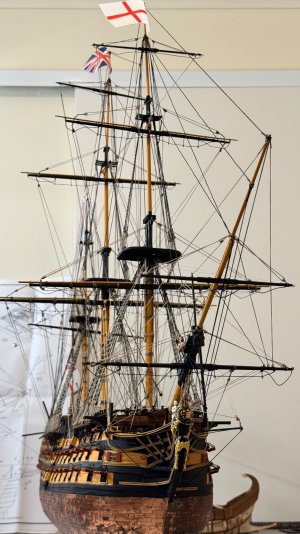
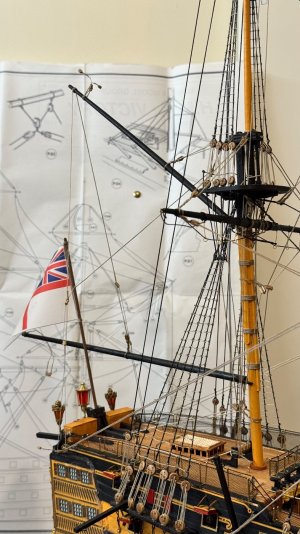
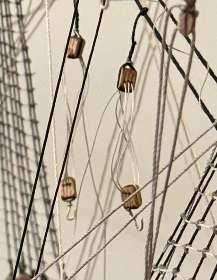
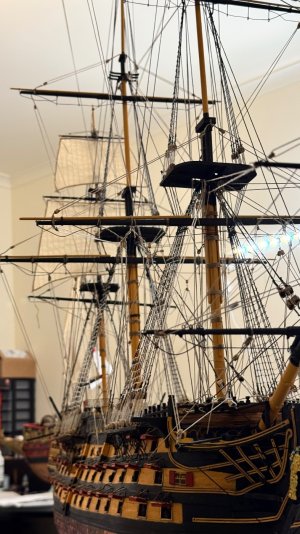
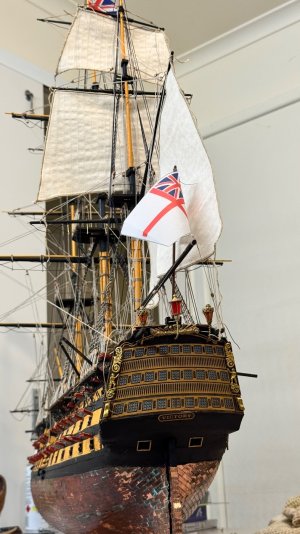
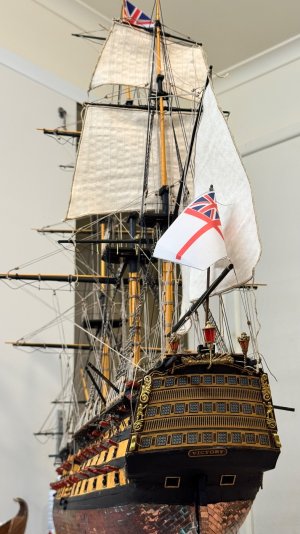
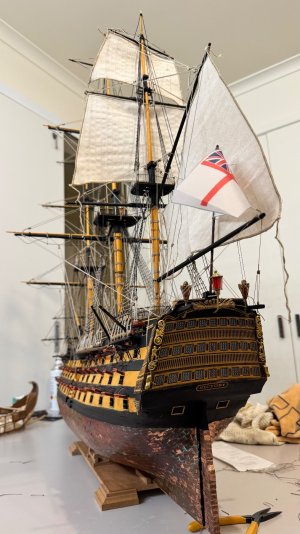
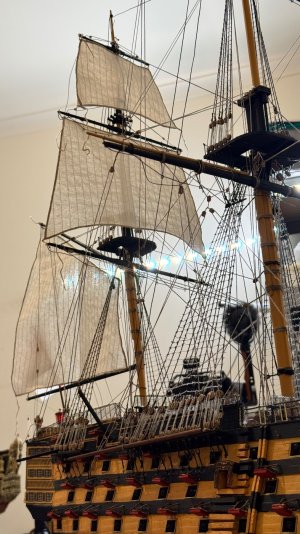
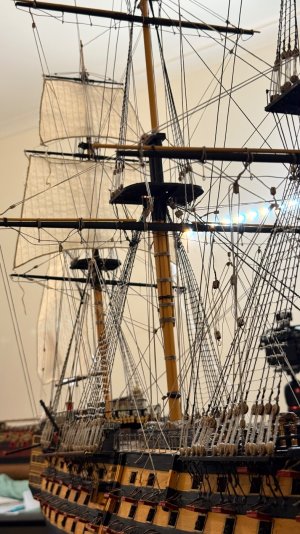
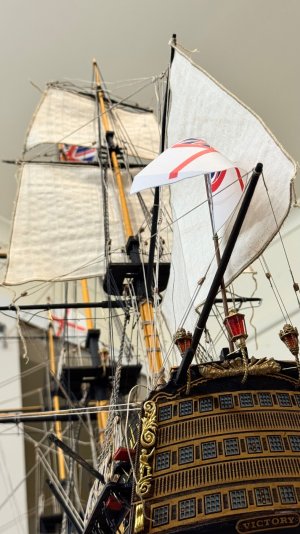
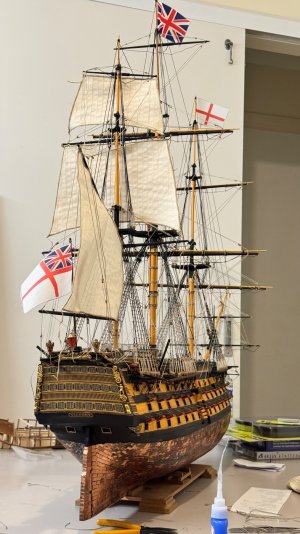
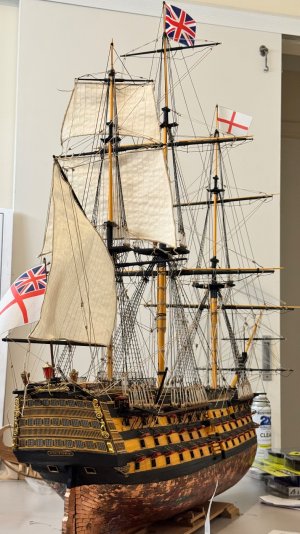
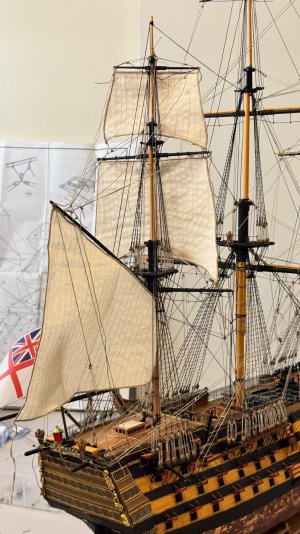
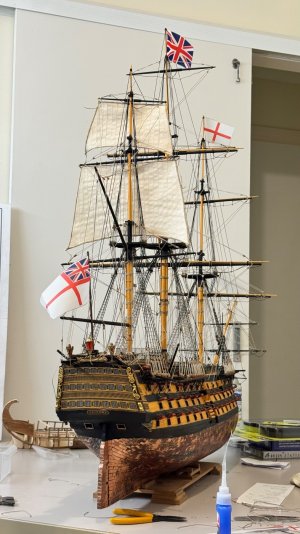
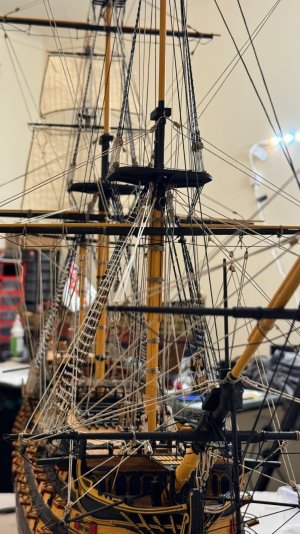
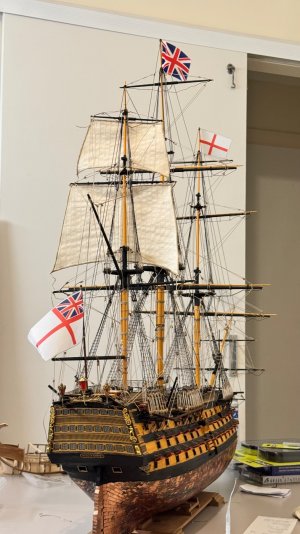
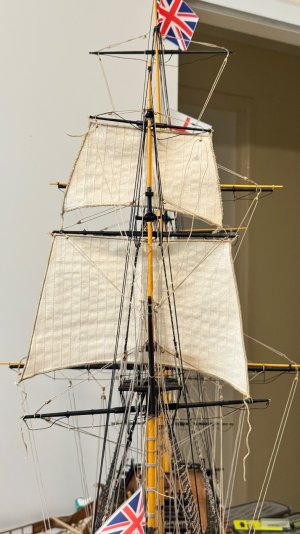
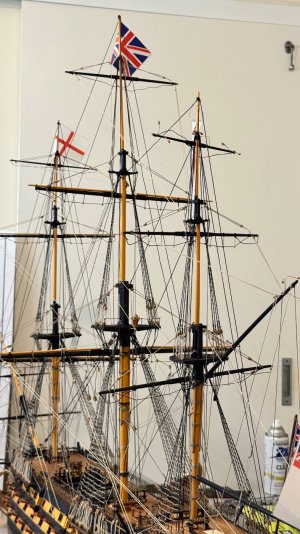
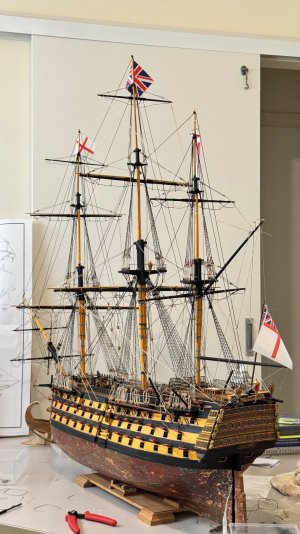
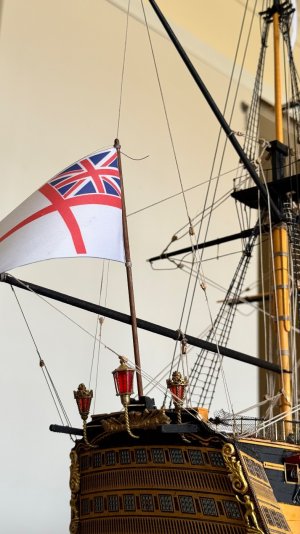


 s and Rudder Chains: Still to be fitted, along with the final deck details.
s and Rudder Chains: Still to be fitted, along with the final deck details.